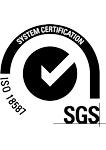Technology has its problems, but nobody can deny the progress it allowed us to make. In a fast-moving world, efficiency is paramount. For translators and their customers, CAT tools are a secret weapon that makes translation work faster and more accurate. That sounds great, but you might be wondering what exactly CAT tools are.
CAT stands for “Computer Aided Translation (CAT)”. The term CAT is very broad and can be used to describe the software that translators use to increase their productivity.
Many professional translators use CAT tools because they can help them increase their productivity, spot any errors, achieve consistency and avoid repetitive translations. CAT tools divide up the text that needs to be translated into segments and then display these segments in a way that makes them easier and faster to translate.
Using CAT tools has many advantages, both for customers and translators.
Translation memory
Basically, CAT tools allow translators to save each translated phrase in a database called the Translation Memory (TM). The CAT tool then uses this memory to analyse each phrase in the text that needs to be translated and provides a match, if there is one. If there is a 100% match, it will provide the exact translation previously stored. If a phrase is slightly different, it will show the stored translation and highlight any differences.
This means that sentences can be translated faster, and the translator can use their time more efficiently. For larger projects, the translation memory allows various people to work together collaboratively.
The translation memory can save customers money, especially if they have repeated translation needs. The translator will be able to take advantage of this stored content and use it in future projects. This is especially useful for customers with specialised vocabulary needs, such as those found in the medical, engineering and manufacturing industries.
Termbase
Both translators and customers can create a terminology glossary to which they add the translation of specific terms. This glossary is called a Termbase (TB). They can even include definitions or provide the context in which each term is used. The Termbase is extremely useful for very technical texts. Customers and translators can use the Termbase to ensure consistency in the use of terminology. This collaboration between customer and translator can also save valuable time and reduce translation errors.
Desktop publishing
CAT tools allow you to translate almost any document format and export the final translation with hardly any design work needed. This process works by extracting the text from the original file to be worked on in the CAT tool interface. After the translation has been completed, it is exported back to the original format and the final file will retain most of its original formatting. If adjustments are needed after exporting the file, this is done in the original file format (Word, PowerPoint, etc.).
This feature is very useful for formats such as Word, to help with tables, fonts, WordArt and other style elements. In more complex formats or layouts, it is usually necessary to work with a desktop publishing specialist.
Machine translation
Typically, the term “computer-assisted translation” makes people think that a machine translation is being used. CAT tools are not synonymous with machine translation. Machine translation is an optional feature that can be used as a starting point for translators, and it can speed up the process. Some translators may use machine translation to translate a text but will then edit that text, ensuring that the text is still translated by a human.













